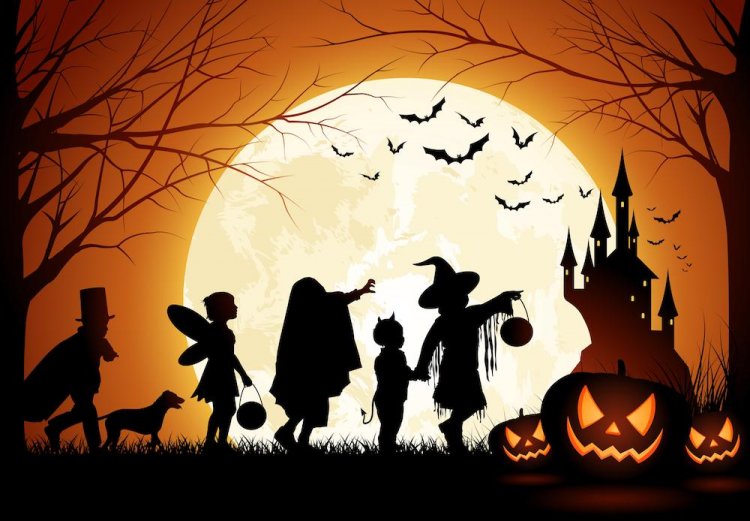5 lesser-known Stories about Halloween

Every festivity celebrated anywhere in the world is an amalgamation of a gazillion stories. And it is fascinating that after celebrating a particular festival for over years, there is hardly any individual who would know all of those hidden primitive stories.
Since Halloween is here, today we will look at the 5 lesser-known stories about this day.
1. Halloween Lanterns were not always made of pumpkins
Centuries back, the Irish people as a part of their festivities use to make Halloween lanterns out of potatoes, turnips, and beets. Pumpkin lanterns came into the picture much later.
For all those who don’t know, these lanterns are known as jack-o'-lantern. And here is the story behind the name given to the lanterns. The name comes from a very old Irish tale about a man named Stingy Jack.

The story of Jack was that he had a Devil friend who he wanted to get rid of. So, one-night Stingy Jack was out getting drunk with the Devil. That is when he convinced the Devil that in order to save money, he must turn himself into a coin to pay for the drinks. He tricked him into doing that and later he put the coin-shaped Devil into his pocket, which also contained a silver cross that kept the Devil from transforming back. Jack promised to free the Devil if the Devil wouldn't bother him for a year, and if he died, the Devil could never claim his soul.
When Jack finally passed away, God decided that due to the mischievous yet fooling tricks that Jack played on the Devil he was not fit for heaven. And Devil had already promised Jack that he would never claim his soul and so Jack could not even go to hell. Without heaven and hell, he was made to stay back on the earth.
Poor Jack was sent off to roam the Earth with only a burning coal for light. He had put the coal into a turnip as a lantern and that is how the name ‘Jack of the Lantern’ or 'Jack o' Lantern’ came into being.
2. Did you know that there is a cake named ‘soul cake’?
For celebrating death on the day of Halloween, All Saints' Day, and All Souls' Day there is a Christian tradition to prepare soul cake also known as a soulmass-cake, which is basically a small round cake.

The story is during the middle ages Halloween was largely Catholicized. Around 1200 — in places like Britain, Germany, and Ireland — cakes made of expensive spices like saffron and currant rose gained popularity and they were named ‘soul cakes’. Beggars would walk around door-to-door asking for ‘soul cakes’ from the wealthy, offering to pray for their dead relatives in return.
In those days, the words ‘trick or treat’ was not yet in vogue. Instead, the beggars use to say this while taking rounds: ‘A soul cake, a soul cake, have mercy on all Christian souls for a soul cake!’
3. Halloween and Valentine’s Day are like siblings
According to Nicholas Rogers' ‘Halloween: From Pagan Ritual to Party Night’, in some parts of Ireland, people celebrated Halloween by playing romantic fortune-telling games. The games were designed in a fashion to help one predict who would they marry and when. Interesting, right?
And since Halloween like Valentine's Day, was one of the main celebrations of the year where young people could gather for a party and meet and mingle with new people, it was also considered a good day to scope out a sweetheart.

4. Animal Brutality on Halloween - a myth or a reality!
Black cats are associated with the celebration of Halloween not in a pleasant manner though. It is unclear to date as to whether black cats are sacrificed around Halloween.
There are varied views in this regard. One school of thought says that various animal shelters refuse to let people adopt cats in the lead-up to the holiday because of the superstition and the concern that the wrong people (who might harm them) might adopt them.
Then, there is another school of thought who on the contrary says that the sacrifice of black cats around Halloween is a thing of the past. This type of ban is starting to wane. According to the members of these schools, “Years ago, this used to be pretty common that shelters would not adopt out cats during Halloween for fear of something horrible happening to the cats, but we don't hear too much anymore. And many, many shelters are actually [holding] a special black cat promotion around the holiday."

In fact, they extended their optimism and stated that most people who go to these shelters to adopt a pet are not going to adopt a pet to sacrifice into ritual, and that would be a very cruel assumption to make per se.
5. Famine and Halloween Celebrations in the USA
Till the 19th century, the celebration of Halloween wasn’t that popular in the United States. There were some pockets in America who celebrated a mild form of Halloween including causing mischief, telling ghost stories, and just generally acknowledging autumn.

And then came 1845 that brought along a Potato Famine in Ireland leading to mass immigration to the United States. Approximately 1.5 million Irish people fled during that time. And they brought along their long-held Halloween traditions, and the soon-to-be holiday caught on quickly, spreading nation-wide.















































